#Live Project Training In .NET
Explore tagged Tumblr posts
Text
In the Willamette Valley of Oregon, the long study of a butterfly once thought extinct has led to a chain reaction of conservation in a long-cultivated region.
The conservation work, along with helping other species, has been so successful that the Fender’s blue butterfly is slated to be downlisted from Endangered to Threatened on the Endangered Species List—only the second time an insect has made such a recovery.
[Note: "the second time" is as of the article publication in November 2022.]
To live out its nectar-drinking existence in the upland prairie ecosystem in northwest Oregon, Fender’s blue relies on the help of other species, including humans, but also ants, and a particular species of lupine.
After Fender’s blue was rediscovered in the 1980s, 50 years after being declared extinct, scientists realized that the net had to be cast wide to ensure its continued survival; work which is now restoring these upland ecosystems to their pre-colonial state, welcoming indigenous knowledge back onto the land, and spreading the Kincaid lupine around the Willamette Valley.
First collected in 1929 [more like "first formally documented by Western scientists"], Fender’s blue disappeared for decades. By the time it was rediscovered only 3,400 or so were estimated to exist, while much of the Willamette Valley that was its home had been turned over to farming on the lowland prairie, and grazing on the slopes and buttes.
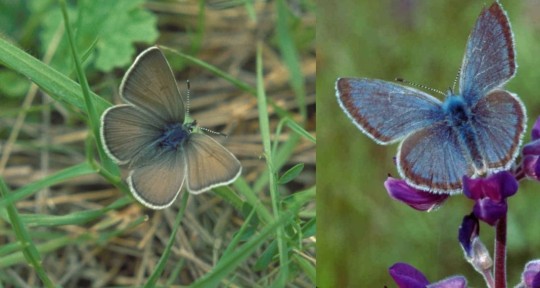
Pictured: Female and male Fender’s blue butterflies.
Now its numbers have quadrupled, largely due to a recovery plan enacted by the Fish and Wildlife Service that targeted the revival at scale of Kincaid’s lupine, a perennial flower of equal rarity. Grown en-masse by inmates of correctional facility programs that teach green-thumb skills for when they rejoin society, these finicky flowers have also exploded in numbers.
[Note: Okay, I looked it up, and this is NOT a new kind of shitty greenwashing prison labor. This is in partnership with the Sustainability in Prisons Project, which honestly sounds like pretty good/genuine organization/program to me. These programs specifically offer incarcerated people college credits and professional training/certifications, and many of the courses are written and/or taught by incarcerated individuals, in addition to the substantial mental health benefits (see x, x, x) associated with contact with nature.]
The lupines needed the kind of upland prairie that’s now hard to find in the valley where they once flourished because of the native Kalapuya people’s regular cultural burning of the meadows.
While it sounds counterintuitive to burn a meadow to increase numbers of flowers and butterflies, grasses and forbs [a.k.a. herbs] become too dense in the absence of such disturbances, while their fine soil building eventually creates ideal terrain for woody shrubs, trees, and thus the end of the grassland altogether.
Fender’s blue caterpillars produce a little bit of nectar, which nearby ants eat. This has led over evolutionary time to a co-dependent relationship, where the ants actively protect the caterpillars. High grasses and woody shrubs however prevent the ants from finding the caterpillars, who are then preyed on by other insects.
Now the Confederated Tribes of Grand Ronde are being welcomed back onto these prairie landscapes to apply their [traditional burning practices], after the FWS discovered that actively managing the grasslands by removing invasive species and keeping the grass short allowed the lupines to flourish.
By restoring the lupines with sweat and fire, the butterflies have returned. There are now more than 10,000 found on the buttes of the Willamette Valley."
-via Good News Network, November 28, 2022
#butterflies#butterfly#endangered species#conservation#ecosystem restoration#ecosystem#ecology#environment#older news but still v relevant!#fire#fire ecology#indigenous#traditional knowledge#indigenous knowledge#lupine#wild flowers#plants#botany#lepidoptera#lepidopterology#entomology#insects#good news#hope
4K notes
·
View notes
Note
Hiii, so I honestly suck at explaining what I want lol, but could you do something where Art is like freshly divorced and decided to start coaching? And he gets with his player who’s significantly younger(if you’re ok with writing age gap stuff! If not it doesn’t have to be included!!) and after a while she has her first time either him and it’s like sweet and soft?
set break | art donaldson x reader
hi, baby! loved this request so much. hope you enjoy!
warnings: SMUT 18+, divorced!coach!art, virgin!reader, implied age gap, cursing, hastily proofread



You'd been his student for a while now— long enough to carve out muscle memory and blistered palms, to mold your discipline into something Art could recognize with a glance. Long enough to make your name known to scouts and whispered about in locker rooms. You were young, all sharp edges and stifled softness, with a game that didn’t ask for attention— it demanded it. Unpredictable. Magnetic. Built from hours no one else was willing to give.
You rose before sunrise. Skipped parties. Trained through birthdays and bruises. Nothing existed outside of the court, and you liked it that way. You were obsessed, but it never felt like a burden. You wanted to be the best, and you lived like it— strict, singular, without distraction. There was no space for softness, especially not for boys who didn’t understand why your hands were always calloused or why your heartbeat aligned with the sound of a bouncing ball.
But Art understood. Maybe that’s why it started the way it did— slow, quiet, unacknowledged. A long look across the net. The rough warmth of his palm correcting your elbow. The way you lingered after practice with half a question on your lips just so you wouldn’t have to leave yet. It wasn’t immediate. It wasn’t even conscious at first. But it built, the way pressure always does— somewhere low and steady, humming beneath everything.
He noticed when your breath caught as he adjusted your stance, when your hand brushed his at the ball bucket. You noticed when his voice dropped a little lower than it had to, when he watched you stretch and then quickly looked away. There was no line crossed. Not then. But the line had moved— or maybe it never existed the way you thought it did.
Somewhere in those shared silences, the space between you began to thin. His gaze started to hold longer. Your jokes softened into something more deliberate. His corrections became gentler, slower. And when your knees knocked on the bench, or your fingers lingered a second too long passing him a towel, neither of you moved away.
He told himself it was nothing. A trick of proximity. He’d just gotten divorced, after all— a quiet ending to a long, tired marriage. There was no scandal, no betrayal. Just the slow unraveling of something that had once been love. He and Tashi had parted like two people handing each other back keys. It was civilized. It was kind. But it was still loss.
And then you walked into his court, and it was like seeing that fire again— the one he remembered from the early days with her. Before the touring, before the burnout, before the silences. You had that same glint in your eyes, that same stubborn tilt of your chin, that same obsessive hunger to win.
It pulled at something he thought he’d buried. He tried to chalk it up to memory, to projection, to the ache of nostalgia. But you didn’t let him. You kept showing up— sweaty, flushed, laughing at his driest jokes like they were brilliant. You worked yourself raw. You gave him hell during drills. And you smiled at him like you trusted him with every fragile part of you.
He started noticing things he shouldn’t. The curve of your neck. The way your voice went rough from shouting line calls. How tightly you braided your hair on game days. He started catching himself thinking about you when you weren’t around— in the grocery store, behind the wheel, in the quiet before sleep. And when his hand slipped while correcting your grip, and you didn’t flinch— when you leaned into him instead of away— he realized it wasn’t memory at all. It was want.
Still, neither of you named it. You trained. You pushed. You stayed late. And he let you.
The tension didn’t arrive like a crash. It built— slow and tight and impossible to ignore. In the thwack of your racket against the ball, in the whistle of your breath between points, in the way you held his gaze just a little too long in what should have always been the most innocent moments.
You learned his moods by the shape of his mouth. He learned yours by the way you adjusted your grip between volleys. He started making excuses to keep you longer. You pretended not to notice.
And at night, when the sky was black and the courts were finally quiet, he’d go inside his home with white knuckles, jaw clenched against the memory of your thighs dusted with clay, your voice low and tired asking for just one more set.
It was unbearable. And it was holy.
You caught him once— late May, heat thick in the air, your tank top clinging to your ribs. He was watching you, really watching, and didn’t look away when you met his eyes. You didn’t smile. Neither did he. But something passed between you that made your knees feel loose.
You started thinking about him in places you shouldn’t. In the shower. In bed, staring up at your ceiling fan, heart pounding just from imagining what his voice would sound like in your ear. You hated yourself for it. And you couldn’t stop.
So when the snap finally came, it wasn’t soft or silent— it was ugly. Loud. Tense. It happened after hours in the sun, your forearms screaming from overwork, your throat hoarse from grunts and breathless curses. You double-faulted four times in a row and Art had said something— not cruel, just curt. But it hit too hard, landed wrong.
“Maybe if you’d stop overthinking and actually listen—”
You dropped your racket. “I am listening.”
“No, you’re reacting. And you're wasting energy doing it.”
You stepped in. Too close. “Then maybe you should coach someone else.”
His jaw clenched. “Don’t say shit you don’t mean.”
You blinked, eyes stinging, your voice rising. “I give you everything—”
“I never asked you to!”
That was the crack. The silence that followed wasn’t calm— it was the kind that pulses in your ears when your heart is racing and you don’t know whether to run or fight.
You didn’t run.
You reached into the minimal space between you, grabbed his collar, and kissed him— hard. Reckless. Like you hated him. Like you needed him. Your fingers curled into the front of his shirt. You tasted like salt and heat and effort. He froze for half a second before kissing you back, one hand sliding to your waist, the other threading into your sweat-damp hair.
It all blurred after that— teeth, breath, hands. He pressed you back against the practice bench, fingers grazing the edge of your sports bra, dragging beneath your top, skin warm under his palms. His touch was firmer than you expected. You arched up into him, more instinct than strategy, wanting more. Needing.
And then you said it.
“I’ve never done this before.”
His hand stilled. He pulled back like he’d been burned, eyes searching yours, chest rising like he’d been running laps.
“What?”
You didn’t look away. “I’ve never had sex.”
It knocked the wind out of him. All at once, the heat and hunger gave way to something else entirely— something tender, something so achingly human he thought he might break from it. He stared at you, stunned. Not with judgment, not even shock. But with reverence.
Your face was still fierce, but your voice had gone soft. “I just... I didn’t want it with anyone else.”
He touched your cheek then, gently, like you were made of glass. “Are you sure?”
You nodded. “I want you to.”
And it shifted— the entire rhythm between you rethreaded itself. No longer frantic, no longer fighting. He kissed you slow this time, guiding rather than taking, hands steady and careful. He let you set the pace. Let you tremble. Let you breathe. He whispered against your jaw, your throat, telling you it was okay to be nervous. That he’d go slow. That you could stop any time. You kept your eyes on his, wide and wet, like you were trying to memorize the way he looked at you— not like a coach. Not like a man with regrets. Like you were a gift.
He didn’t let it happen there. Not on the court. Not with the sun still high and the sweat still drying on your skin. The moment your voice trembled with that confession, everything in him shifted— the hunger in his eyes replaced by something deeper, gentler, more reverent.
“No,” he said softly, thumb brushing your cheek. “Not here.”
You blinked, confused, until his hands fell to your waist and he pressed the softest kiss to your temple. “Your first time isn’t happening on a tennis bench,” he murmured. “Come inside.”
You followed him into the house without a word, nerves coiling low in your belly. The house was quiet, the air cooler than outside, your footsteps muffled against the hardwood. You’d only ever seen glimpses of it before— a mug in the window, a hallway through the screen door. Now, everything felt achingly intimate. Lived-in. Real.
He led you into his bedroom, the sheets rumpled, sunlight spilling through half-closed blinds. There was a pair of his shoes by the nightstand, a stack of worn books on the dresser. And then there was him, watching you with something tender and unraveled in his eyes, like he didn’t know what he’d done to deserve this moment.
“You okay?” he asked, voice barely more than a whisper.
You nodded. “Just… nervous.”
“I know.” He stepped closer, cupped your face with both hands. “You don’t have to prove anything. Not to me. Not ever.”
That was what undid you— not the kiss that followed, not even the hands that slid beneath your top again. It was the way he said it. Like he meant it. Like he’d carry the weight of whatever this was, if you let him.
He kissed you slowly, thoroughly. Not like he was trying to take, but like he wanted to learn. His hands slid beneath your shirt, coaxing rather than rushing, and this time, you let him undress you piece by piece. He laid you back on the bed like you were something he’d prayed for. And when his body came down over yours, warm and solid and so heartbreakingly careful, you let out a breath you didn’t know you’d been holding.
He asked again if you were sure. You said yes. Again.
And then he took his time. Not just in the motions, but in the pauses. In the way his eyes flicked over your face like he was trying to read every thought, every hesitation. He kissed your shoulder, your jaw, the soft dip beneath your collarbone. His hands were warm and broad as they traveled across your ribs, your hips, your thighs, not greedy, but grounding— like he wanted you to know you were safe.
"Tell me if anything feels wrong," he murmured against your skin. You nodded, already breathless.
When his hand slid between your legs, you startled— not out of fear, but out of unfamiliarity. He stilled immediately.
"Too much?"
"No," you said quickly, then quieter, “just… new.”
He smiled, soft and real. “New is good. We’ll go slow.”
And he did. His fingers moved with care, coaxing rather than demanding, reading every shift in your breath like it was strategy, like it was gameplay. You gasped when his thumb brushed your clit for the first time, eyes flying to his. He held your gaze.
"That's okay," he whispered. "That’s just you feeling it."
You didn’t know how to be quiet— not with him. You let the sounds happen. The soft whimpers, the ragged gasps, the way your hips tried to chase his touch without you even realizing. He didn’t tease. He didn’t push. Just stayed with you, murmuring encouragement, grounding you with his voice.
When he finally slid a finger inside, your breath caught. It wasn’t painful— just strange. Full. Real. Your muscles clenched around him, and he stilled again.
“Breathe,” he said. “Just like we do on the court. In through the nose.”
You did.
He moved slowly, gently, building rhythm. When he added a second finger, you whimpered, and he kissed your forehead. “That okay?”
You nodded into his shoulder, thighs trembling.
“God, you’re so good,” he whispered. “Doing so good for me.”
You’d never been touched like this. Never had someone take their time, pay attention, listen.
By the time he pulled back and reached for the drawer— a condom, the sound of the foil tearing— you were half-gone with need.
He knelt between your thighs, eyes on you the entire time. "You ready?"
You nodded.
"Words."
“Yes. I’m ready.”
And when he finally pressed inside, it was slow and careful. Your breath hitched, your body tensing despite your trust. He held still, his forehead resting against yours, hand cupping your jaw as if to remind you he was there, fully, completely. His voice was barely a whisper: “You’re okay. I’ve got you.”
You nodded, your thighs trembling around his waist, your hands clutching at his shoulders. He kissed your cheek, your eyelids, waited for your breathing to slow. “You’re doing so good,” he murmured. “Tell me when.”
It took a moment. A heartbeat. Then another. And then, quietly, you whispered, “Okay. I’m okay.”
He moved in increments, barely-there thrusts, watching your face for every wince, every exhale. You could feel every inch of him, slow and thick and unrelenting, stretching you more than you thought you could take. Your legs trembled, your fingers curled against his shoulder blades, and he kissed along your jawline, whispering your name like it grounded him. Every press of his hips made your body jolt, nerves alive and blinking, your breath stuttering in your throat.
"You're so tight," he murmured, groaning low as your body tried to adjust around him. "Fuck, baby— you're driving me insane."
The slick glide of his thumb over your clit returned, gentle but insistent. Your thighs quivered, heels digging into the mattress, hips lifting just slightly to chase him. You felt stretched, overwhelmed, but full. Filled in a way that settled somewhere between ache and pleasure.
He kissed your temple, your cheekbone, the corner of your mouth. “I’ve got you,” he whispered, again and again. “Just let me take care of you.”
The pain dulled, warmth replacing it. The friction started to melt you open.
Your voice cracked. “Don’t stop.”
He paused, forehead pressed to yours, chest heaving. “Yeah?”
You nodded. “There.”
So he followed it. Stayed there. Kept it shallow and tender, murmuring praise between kisses, telling you how beautiful you looked, how proud he was, how much you were giving him.
You weren’t sure it would happen. Everything was so overwhelming— your body, his body, the unfamiliar ache that pulsed low in your stomach, the constant tension of wanting more but not knowing how to ask for it. But then his hand slipped between you again, his fingers finding your clit, and he murmured, “Let me make you feel good. Please.”
Your breath caught. You nodded, but he didn’t rush. He adjusted slightly, slowing his hips, angling deeper— and with each pass, his fingers moved in rhythm. The pressure started building almost without your permission. Your thighs flexed. Your fingers clenched in the sheets. You gasped something that wasn’t a word and clung to him like he was the only thing keeping you grounded.
“That’s it,” he whispered, his voice rough now, pleasure curling through it. “That’s it, baby. You’re so good. So fucking perfect. Just let it happen.”
The feeling crested slowly, the way a wave might swell before it crashes. You arched beneath him, breath shaking, lips parting as the world narrowed to sensation— his voice, his fingers, the sweet ache of him inside you. And then it hit.
You came with a soft, gasping cry, every nerve ending lit up, your back bowing, your thighs trembling around his waist. He didn’t stop. He kissed you through it, holding you like you were breaking open in his arms.
“That’s it,” he said again, so tender it made you want to cry. “So good. So good for me.”
And only after, when your body relaxed, when your eyes fluttered open and you saw the way he was looking at you like you were some kind of miracle— did he let himself go. Thrusts stuttering, jaw clenched against your shoulder as he followed you into it, hips rolling once, twice, and then still.
For a long moment, neither of you spoke. Your breathing slowed in sync. He rested his forehead against yours, still inside you, his hand cupping your jaw with aching care.
“You okay?” he whispered.
You nodded, eyes wet. “Yeah. I’m really okay.”
He kissed your nose, your cheek, your shoulder. And then he pulled you close and didn’t let go.
It didn’t last long. It wasn’t perfect. But it was yours. Real and raw and impossibly tender. And when it was over, when he curled around you with one hand stroking your back and the other cradling your face, you felt something settle inside you— quiet, certain.
Later, when you were rested against him in bed, fingers drawing patterns over his chest, he’d think about the walls you carried and the way you finally let him see past them. He’d think about the trust it took to open up. And he’d promise— silently, fiercely— to take care of you, just like you deserved.
-----
tagging: @kimmyneutron @babyspiderling @queensunshinee @hanneh69 @jamespotteraliveversion @glennussy @awaywithtime @artstennisracket @artdonaldsonbabygirl @blastzachilles @jordiemeow @soulxinxthexsky @voidsuites @elsieblogs @deeninadream @nozhdyved @asheepinfrance @love-ella333 @jesuistrestriste @cha11engers
want to be tagged in the next one? join here!
#a writes#ava's asks#art donaldson#art donaldson fic#art donaldson x reader#art donaldson x you#art donaldson fluff#art donaldson angst#challengers fic#challengers#challengers movie#art donaldson smut#mike faist#tashi duncan
156 notes
·
View notes
Text
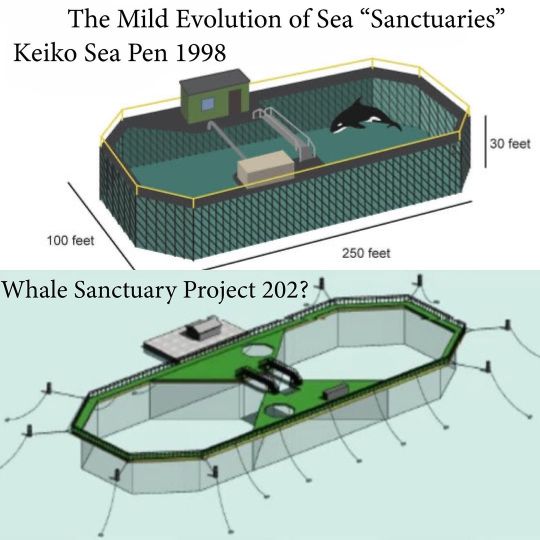
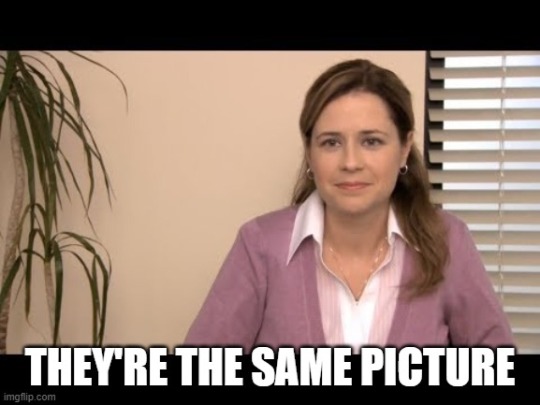
The Whale Sanctuary Project have their sights set on Wikie and Keijo and they want to accelerate their plans and make a bay pen to put them into.
This "revolutionary plan" is exactly like what these whales already have - round the clock vet care, med pools, gated pools, slide outs - but with more stressors and uncontrollable variables than before.
These ~natural elements~ is just the naturalism fallacy being used as a marketing ploy. These whales don't understand this "natural life." You might as well be plucking them out and throwing them on a different planet.
Now, if you haven't worked on and around the ocean before, let me shed some light as someone who had to take a boat out to the Pacific Ocean to work with dolphins every day.
The ocean doesn't take kindly to man-made structures.
It will wear things down, ocean winds will rip your pontoons out and shred them, storm surges don't care about the weighted blocks you put down to stop your net lifting out. The animals will need to be fed in hurricane force winds that pull you off your feet. The net will need to be checked by divers and maintained no matter the season.
Your animals will have to fight daily with currents and tides that tug them around - sometimes those tides can pull them into nets. Wild marine life will harass them for their fish and naive animals will spook and shy away from coral and fish and anything that they haven't seen before (so good luck getting stationing for feeding when there's a weird looking fish around). You have to scoop out trash, cigarette butts and plastic bags and hope to whatever god you have that your retrieval training is enough to stop your animals from eating them. Your animals will very likely eat leaves, sticks, pebbles, anything they can get their mouths on.
(Since the sanctuary doesn't like training, I wonder if they'd even train a retrieval behaviour since it's "unnatural".)
A sea sanctuary is just captivity with a fun little animal rights activist spin on it. It is still captivity, no matter how big you make it. Wikie has been in human care for over 20 years. She has adapted to her current environment and throwing her into a bay pen is going to be stressful for her. She won't know anything about this new environment and there will be only a flood of new stimuli with nowhere to retreat from it.
The beluga Little Grey got stomach ulcers within only a few days of being out in the smaller acclimation bay pens. Little Grey and Little White have only been in human care for a bit over 5 years and they are struggling, even with the chance to decompress in their indoor pool.
Why are we planning this? What is this serving? We have no evidence that a sea pen is an inherently better housing situation for cetaceans.
We started with sea pens when orcas were first being captured! And orcas died there too.

Namu was one of the first captured killer whales and he died in a sea pen. The sea pen doesn't magically fix welfare issues caused by poor management.
"But that wasn't a REAL sanctuary!"

Okay then if sea pens are so inherently enriching and fix all welfare issues, why was Keiko logging for hours in his bay pen? Why did he become overweight and sluggish and sexually fixated on a giant red ball until someone who actually knew what they were doing started a proper training plan for him?
Why did Nami die with 180 lbs of stones in her stomach that she had ingested while living in a sea pen? Aren't sea pens so inherently enriching and stimulating that they don't need enrichment or training sessions? As Lori Marino put it in a bizarre webinar last year: "they'll be enriched by the flora and fauna; they won't need trainer relationships."
Anyway stop falling for these scammers and advocate for actual animal welfare that has science to back it up.
226 notes
·
View notes
Note
Some academic tomfoolery: newbie marine biologist Grian is trying to study some FASCINATING odd seal behaviour. this species of seals are using and making tools and doing more obvious vocal mimicry than usual along with lots of complex seal noises! incredible! Seal stone age and plausibly language! Though it's mostly more...bone age...lots of chewed-into-shape bones. He should probably get an anthropologist in on this but this is like, one of his first projects, he'd have to actually publish this first.
There's even a particularly tool-smart one who seems to be poking around at a fresh shipwreck and keeps coming up on Grian's boat? Grian's wished them luck with whatever they're trying to do with the destroyed boat (it had belonged to some rich guy and experienced bizarre problems at sea one day and wrecked some rocks where it absolutely shouldn't have been) but he's not risking going there That Boat. Sometimes bits of it moves. He thinks the seal is discovering redstone. They've definitely discovered fire and cooking, there's a deliberate campfire there some days and he's seen them with cooked seagull and fish.
also there is a Very Attractive Mechanic-In-Training, Mumbo, who's been working on his boat and seems to think Grian's research is funny without ever actually doubting any of it and has a very fancy and clearly custom-made dappled black and grey jacket that might actually be real pelt. He's going to the same university Grian's doing research with, finishing his degree in nautical engineering; he's getting so much extra credit fixing all the bizarre problems Grian's boat keeps getting. Some of them are Grian's fault, some of them are just things breaking because they're on a boat, and some of them are very smart seals investigating the boat and breaking it in new and bizarre ways.
Who even tries to shuck a boat? Idiot seal juveniles with bone-and-wood shellfish harvesting tools, apparently. At least, Mumbo is convinced it's an attempted boat-shucking, and not just stabbing the boat to see what'd happen or because they don't like it.
Mumbo and Grian hit it off, Mumbo seeming to have a crush at first sight - he's so flustered when Grian talks to him the first time!
Grian's been telling Mumbo all about his research, and Mumbo's been telling Grian all about his studies, and they've been getting along really well and even starting to cautiously flirt and go out to places together. Mumbo has tales about the mess half the fishing boats in the area are in, some people just don't maintain their boats right.
And then one day Grian spots the genius seal caught in a fishing net and, well, he dives down to save them. Just in time to see them try to save themself by turning into Mumbo the boat mechanic. Turns out selkies are real. At least the different shape means he's less stuck so they can free him easier.
And just to make it worse: Mumbo's the genius seal who's been on his boat in seal form before, multiple times, starting when Grian was just starting out his research and had no idea how smart these seals were. And messed with Grian's stuff. Grian had called him a "glorious chonker" and "beauty" and "smarter than a Grian" to his face. Which was his first meeting with Mumbo apparently. No wonder he'd been so flustered the first time he worked on Grian's boat! And several other times after!
(Though now he has a new research avenue: what's with the majority of selkies being unable to take human form? Sure, joining human society enough to study boats was apparently very difficult for Mumbo, but - it'd be a lot easier to make those tools if more than a few of them could have thumbs.)
longpost anon. have some selkie mumbo.
What's even worse - the worst thing ever, actually - is that Mumbo had to rescue Grian. From attempting to rescue Mumbo. Because Grian got caught in the net afterwards.
And now he never lets Grian live it down. He's even started his own "research" paper! On the Study of a Grian. Not only has Grian discovered selkies exist, but apparently they're able to bully him!
Jeez. And Mumbo has to be hot too. Selkies just get it all, huh?
#hermitshipping#ask#grian tag#mumbo tag#grumbo#longpost anon#mod 🎀#weekly theme: academic tomfoolery
99 notes
·
View notes
Text
Tony is not a businessman
Crazy opinion, some might say. But I know what I'm talking about. Let me show you.
Here's a hypothesis: Tony was never interested in becoming CEO of SI or any other company. Never wanted to do business for life. Was not interested in what's going on in his company before Afghanistan. And never even learned how to run it.
Let's check the facts we have:
Before becoming CEO, Tony spent his entire life as a student. He had degrees in science and engineering. Nothing close to business. No MBA, no economics, no management. His interest was focused on robotics and AI. Before his parents died, he had no experience running a company or working in business. I'm sure his father gave him some business training. Including, of course, how to behave in public so as not to be eaten by sharks. But that's it. He never showed or mentioned any interest in business.

He was not interested in expanding his company or making more money. He stopped at $10-20 billion. Never earned more, but could. Reminder from this post about the net worth of real billionaires: Elon Musk - $210 billions, Jeff Bezos - $195 billions, Bill Gates - $129 billions. Huge difference. And they are not even as brilliant as he is.
He also didn't try to buy and take over other companies.
He didn't really care about money. He stopped weapon manufacturing after returning from Afghanistan. He knew that SI could go bankrupt. Easily. But he did it anyway. He could have made a lot of enemies. Including politicians and military. He did it anyway.

He instructed Pepper not to do business with other companies working on anything that could be used as a weapon.


And this means fewer projects and contracts, less profit and influence on the market and many industries.
Have you ever seen him actually run SI independently? In IM1, he showed Jericho to officers in Afghanistan and reported back to Stane on how it went.
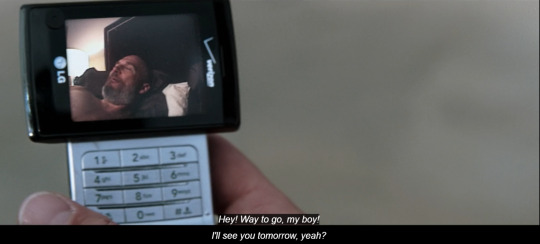
He wasn't even aware of the Board meeting.
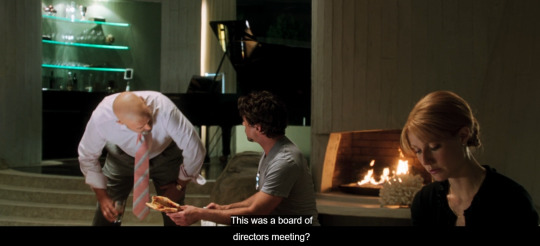
He appointed Pepper as CEO. Yes, he thought he was going to die soon. But he never took it back. This gave him more freedom to do what he was most interested in and enjoyed doing - science and saving the world.
When he was appointing her in IM2, he said:
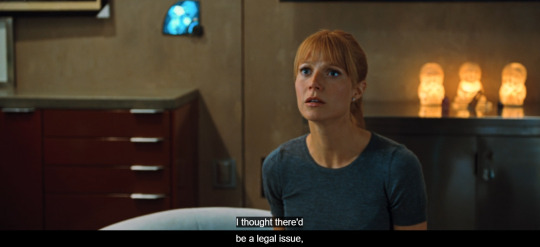

He thought. He didn't even know how the company's processes worked. Because he was not interested, and because Stane was doing business for him.
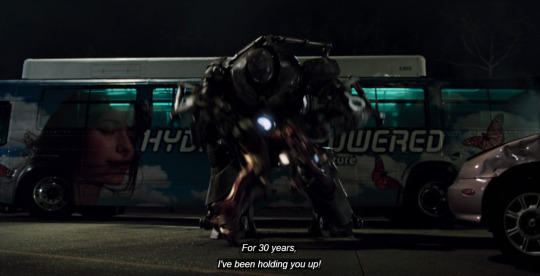
And Tony simply trusted him and the board of directors because they promised him they wouldn't do dirty business. That was the only thing that interested him back then.
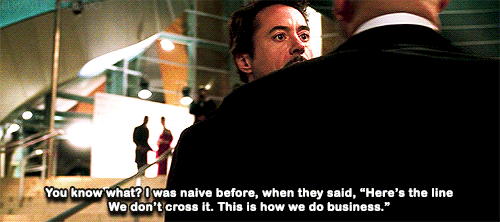
That's why he had zero awareness of all the under-the-table deals Stane made behind his back. Because Tony never looked back. He trusted them. This trait will again hurt him greatly in the future.
We never saw him in his office (only when it became Pepper's office). He was always at home in his lab.
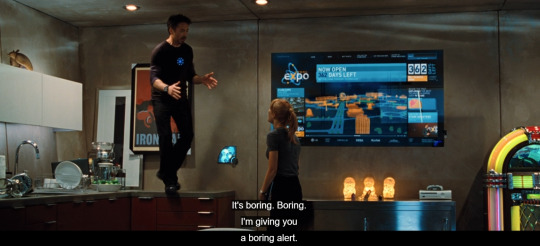
Every time Pepper or other people came to Tony with business matters, Tony tried to get rid of them (the matters and the people). To postpone, to ignore, to be late, intentionally or not. It was boring. He didn't like the people in business. He didn't respect them because he knew who they were. He didn't care about their recognition. He was making more room in his busy schedule to spend time at home, doing science and tinkering.

Conclusion: Tony was never really the CEO of SI. He was its R&D Department.
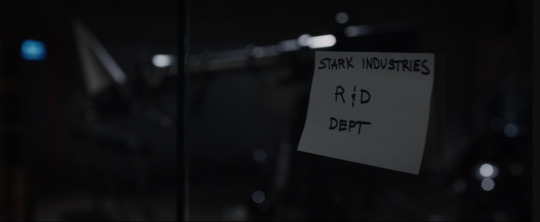
He was never a businessman, but had to pretend to be one. He was not a businessman not because he was incapable or lazy. He was smart enough to do the job. It just wasn't his thing. He was glad to get rid of this obligation as soon as possible. After 20 years of living a life he never wanted, it certainly felt great being someone closer to himself.

P.S. Happy non-CEO 1602 Tony says Hi from his science barn (he also knows the local Robin Hood, but shh...).
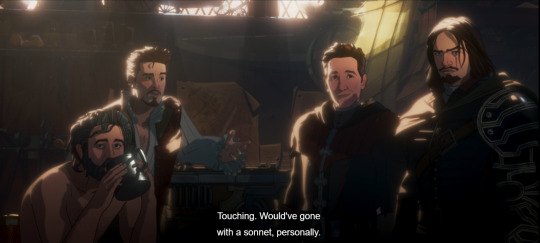
#marvel#mcu#tony stark#iron man#the avengers#iron man 3#iron man 2#pepper potts#obadiah stane#business#stark industries#what if
70 notes
·
View notes
Text
What to make of the so-called Department of Government Efficiency at this stage of the Trump administration? Elon Musk has purportedly stepped away from his government duties. Courts are trying to strike down some of DOGE’s most egregious efforts. It may seem as though the worst excesses of DOGE have passed, replaced by something closer to a stasis.
This isn’t true. Not even close.
While the image of DOGE most likely burned into your retina is that of Elon Musk wielding a literal chain saw, the theatrics belie an organization that has quietly permeated all corners of the federal government. More than that, it’s increasingly clear that its objectives are now indistinguishable from that of the broader Trump administration. Removing DOGE at this point would be like trying to remove a drop of food coloring from a glass of water.
And what is it doing from its perch? Not loudly, clumsily attempting to fire thousands of government employees, but working in secrecy to collect, combine, and analyze data that was never intended to comingle. Using that information to find and surveil immigrants. Giving the Justice Department an assist on alleged voter fraud indictments.
Even if Musk claims he’s stepping away—though he met with House Republicans just this week—his lieutenants are still firmly in place at the agencies that control the federal workforce and regulate his companies. DOGE is reportedly using his xAI Grok chatbot to parse sensitive data, which potentially means millions of Americans’ personal information is doubling as training data for the model. A 19-year-old who goes by Big Balls online is still a central figure.
Meanwhile, the victories against DOGE may be short-lived. The Trump administration used it as a battering ram to push its policies through with overwhelming force. While the courts have held firm in some cases—just this week, a judge declared DOGE’s takeover of the United States Institute of Peace to be unlawful—the policies still exist, and there are other ways to achieve them. The Wall Street Journal reported recently that director of the White House Office of Management and Budget Russell Vought would pick up DOGE’s cost-cutting mantle in the post-Musk era. Expect him to wield not a hammer but a finely edged blade.
This has always been the plan. Vought is the architect of Project 2025, the policy road map that DOGE has been following turn by turn. He has been explaining for months what happens after DOGE’s first assault.
“We’re going to use all of our executive tools to make those savings permanent,” Vought said in an interview with Fox Business anchor Larry Kudlow on March 11. “We’re going to do everything we can to make sure that those are not merely something that goes on a website, but becomes permanent … We’ll work with Congress to do it, but we’ve also been aware the extent to which Congress has had a hard time passing cuts of any magnitude, and so what we want to do is everything we can to use presidential tools to bank those savings home.”
The only part of this that hasn’t gone to plan is that Congress may be more amenable than Vought gave it credit for; the House of Representatives managed to pass Donald Trump’s One Big Beautiful Bill this week, complete with provisions that cut the social safety net into ribbons.
In some ways, DOGE is even more dangerous when it’s boring. It has always been a tool, not an engine unto itself. It’s no longer useful to think of it as a separate entity, as a tech billionaire’s personal strike force. It’s a means to an end, one part of a larger project to gut the federal government and redefine the social contract. It’s important to keep a close eye on DOGE, to continue shining a light on what it does in the dark. But never lose sight of that project. A fool with a chain saw is nothing compared to the full power of the state.
13 notes
·
View notes
Text
clutch || eight
there are written parts :)
note that the timeline or educations may not add up but just ignore it because i don't have the brain power to sync up THIRTEEN + 1 's education schedules
sorry for the late chpt. I was really sick so i tried my best on this chpt. next chpt will be longer, i promise.
warnings: some level of chae-young attempting infidelity, swearing
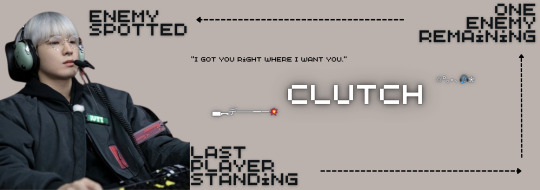

wonwoo came home to find yn passed out on the couch.
"you okay?" - wonwoo
"i need sleep. i've been stuck at school finishing my final project and i just finished. now i have to worry about the stupid reunion in two days. i have no dress and i look like a zombie. life is great." - yn
"go take a shower. i'll get the guys to help you. jeonghan has connections." - wonwoo

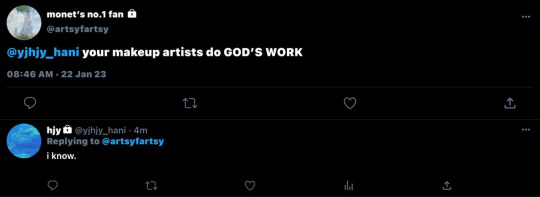
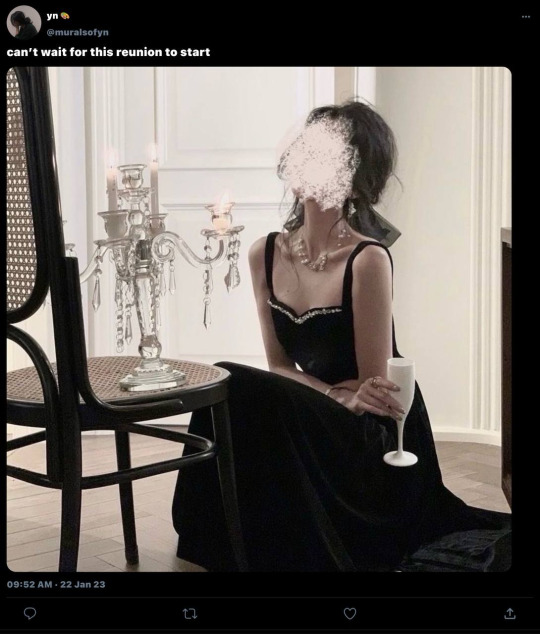


the word shock wasn't enough to describe the look on everyone's faces when yn and wonwoo walked in through the door.
some background information: in the one week before this gathering, yn had completed her pieces for the museum, her final project for university and all her outstanding commissions. her exhibit had been very successful and she had earned quite a significant amount of money.
"yn. is that your boyfriend?" - aunt
"yes. this is jeon wonwoo, my boyfriend." - yn
"nice to meet you, my name is jeon wonwoo." - wonwoo
"yn-noona... isn't that the streamer gameboi? you're dating Korea's number 1 [game name] player?" - younger cousin
"no way..."
the whispers in the event room got louder and louder until the people she hated finally came towards her. it was evident that chae-young was gawking at wonwoo. she didn't even bother to hide her lovestruck expression from her husband.
"so this is the new guy you have, huh yn." - mother
"good morning, i'm jeon wonwoo." - wonwoo
it seemed like he had to repeat himself often today.
"what's your net worth?" a disrespectful question right off the bat was expected and both yn and wonwoo had prepared for it.
without missing a beat, wonwoo simply smiled and said, "14 million. I am sure that I have enough to take care of yn for the rest of our lives."
the jealousy that clouded chae-young's face was the best thing that yn had ever seen.
sitting at the table was very awkward because they were surrounded by whispers and glances.
“so wonwoo. what do you work as?” chae-young’s husband was actually a very nice man. he was always kind to yn and her brother and was the complete opposite of his distasteful wife.
“i’m a gamer. i’m currently in talks of joining [fictional korea no.1 pro gamer team]. that deal closes before june,” - wonwoo
“ah i see. what about you, yn? what are you working as now?” this question was on everyone’s mind. some with ulterior motives.
“up until thursday, i was a museum part-timer and finishing university. but i recently managed to sell many of my art pieces and have made quite a name for myself in the past three days. in case you all didn’t know, almost every artwork in this building was made by me over the last 4 years.” - yn
the room was silent. you could hear a pin drop and wonwoo couldn’t help but smile to himself.
let’s walk through the real train of events.
after the “fake-dating” agreement, wonwoo, minghao, mingyu and dokyeom had helped yn move every piece of her artworks over the years to minghao’s studio to sort through them. it took them almost 30 hours to categorise. by monday, they had organised the auction within the museum, an exhibition for her other works and an online bidding website for exclusive works. from tuesday to thursday, the auctions and exhibitions opened.
every one of yn’s artworks sold for incredibly high prices. this particular hotel that the family reunion was, had purchased a significant amount of said artworks.
“you mean you painted that painting of a phoenix?” - uncle
“i did that 2 years ago.” - yn
“and that ceramic heart? that was you?” - aunt
“yes.” - yn
wonwoo could not help but smile at yn’s nonchalent bragging. just then, a hand reached across to tap his.
“so~ wonwoo-oppa~ how did you and yn meet?" chae-young began to blatantly flirt with wonwoo while her HUSBAND sat helplessly beside her.
“i commissioned an art piece from her and fell in love at first sight.” wonwoo forcefully took back his hand before leaning closer to yn, earning a scowl from chae-young.
yn was’t exaggerating when she described all of chae-young’s antics.
here’s a list of the things she tried but failed to do. seduce wonwoo, yn’s “boyfriend”, spill water on yn, pretend that yn stepped on her foot on purpose, claim yn slapped her.
how embarrassing.

ฅ^•ﻌ•^ฅ
synopsis: wonwoo is a popular streamer known for his incredible gaming skills and good looks. He turned heads. but he hates the attention. he just wants to play games and earn money. one day he receives a letter. his apartment’s rent has almost doubled. no warnings at all. his current paycheck from streaming can’t shoulder those bills. he has no choice but to rent out his spare room. to who? a fresh art university graduate who has… 1. a stable job ✅ 2. talent for art and sculpting ✅ 3. many friends ❌ 4. social anxiety ✅ 5. no filter ✅ when his iconic cat logo gets copystriked, she comes to the rescue with a new logo for him. when his apartment’s walls start peeling, she fixes it. whatever he used to struggle with… the empty space... was now filled by her. so what does he *last player standing* do when her ex *enemy spotted* tries to take her back? heh. *clutch* he clutches.
inspired by wonwoo's gam3bo1 streams, falling into your smile & gogo squid (has hints of valorant)
pairing: streamer!jeon wonwoo x fem!artist!reader (ft. jeongcheol, soonhoon, junhao, seoksoo, verkwan)
genre: fluff, comfort, slowburn, comfort, pining, bestfriend!minghao
warnings: stalker ex, toxic ex, mentions of abuse, guns (game), cursing, hate comments, panic attacks
started: 28.12.23
ended: ?
taglist: join from my masterlist

main masterlist
smau socials
previous I next
tags! @fairyofhour @megseungmin @sun-daddy-yoriichi @woozixo @euphoric-univers @christinewithluv @haowonbins @ocyeanicc @asyre @cynthiaaax13 @superhoshisvt @bangantokchy @chimmy-bts @angelarin @daisawa @writingbarnes @jeonghansshitester
@belladaises @wonwootakemyheart @wonwooz1 @luchiet @kookssecret @caratsland @peachescreamandcrumble @thepoopdokyeomtouched @isabellah29 @leah-rose03 @yandere-stories @coupshour @heesbees @hamji-hae @hyuckxtagram
#caratsland#wonwoo#wonwoo x reader#jeon wonwoo#wonwoo smau#seventeen headcanons#wonwoo fluff#seventeen imagines#svt fluff#wonwoo scenarios#svt x reader#dino x reader#dk x reader#hoshi x reader#jeonghan x reader#joshua x reader#jun x reader#svt#svt masterlist#svt smau#jeongcheol#seoksoo#soonhoon#verkwan#junhao#gameboy#kpop#seventeen reactions#seventeen scenarios#seventeen x reader
113 notes
·
View notes
Text
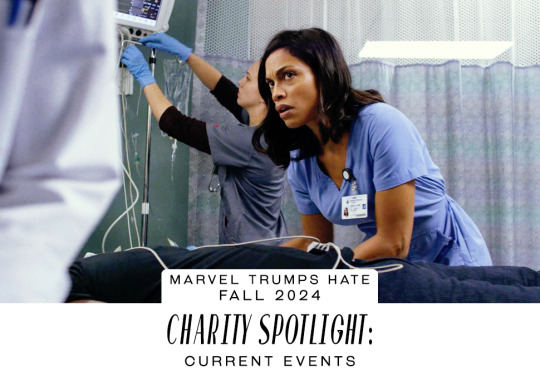
Current Events
This year continued to be A Lot and we decided to ensure that there were charities that directly addressed current events. Folded into this post are groups that work for aid targeting every natural disaster as well as man-made ones, climate change, rights under attack, and the ongoing pandemic. If you're looking for an organization that directly addresses any of those, this is your spotlight post.
For more information on donation methods and accepted currencies, please refer to our list of organizations page.
Center for Reproductive Rights
The Center for Reproductive Rights is the only global legal advocacy organization dedicated to ensuring reproductive rights are protected in law as fundamental human rights for the dignity, equality, health, and well-being of every person. With local partners across five continents, they have secured legal victories before national courts, UN Committees, and regional human rights bodies on issues such as access to life-saving obstetrics care, contraception, maternal health, and safe abortion services and the prevention of forced sterilization and child marriage.
Clean Air Task Force
As we've seen for a long time now but especially this year with constant natural disasters and alarming news from all over the world, climate change is real and we need to do something about it. Over the past 25 years, CATF, a group of climate and energy experts who think outside the box to solve the climate crisis, has pushed for technology innovations, legal advocacy, research, and policy changes. Their goal is to achieve a zero-emissions, high-energy planet at an affordable cost.
Electronic Freedom Foundation
The leading nonprofit defending civil liberties in digital spaces, EFF champions user privacy, free expression, and innovation through impact litigation, policy analysis, grassroots activism, and technology development. They fight against online censorship and illegal surveillance, advocate for net neutrality and data protection, and more so that technology supports freedom, justice, and innovation for everyone.
Innocence Project
The mission of the Innocence Project is deceptively simple: exonerate those who have been wrongly convicted through the use of DNA evidence. The reality of it involves much broader strokes covering support for exonerees rebuilding their lives post-release and criminal justice reform through targeted litigation and the implementation of laws to prevent wrongful conviction. They strive to restore freedom for the innocent, transform the systems responsible for unjust incarceration, and advance the freedom movement.
International Rescue Committee
Founded in 1933, the IRC is a long-standing trusted partner in supporting those whose lives have been upended by sudden violence, political or natural. They are no stranger to areas of disaster and conflict throughout the world as they currently work in 40 countries. The IRC provides emergency aid and long-term assistance, including refugee settlement, and focuses on health, education, economic well-being, empowerment, and safety.
Médecins Sans Frontières/Doctors Without Borders (MSF)
Odds are you’ve heard of MSF, the global organization that sends trained medical professionals to the places they’re needed most. MSF has been working globally for over 50 years, providing medical assistance to people affected by conflict, epidemics, disasters, or exclusion from healthcare—no matter what. They’re guided by principles of independence, impartiality, and neutrality to global political policies or movements.
Oceana
Oceana is the largest international advocacy organization for ocean conservation. To protect and restore the world’s oceans, they campaign globally for policies that stop overfishing and plastic pollution, protect habitats and the climate, and increase biodiversity. Oceana conducts its own scientific research and expeditions, is engaged in grassroots activism, and is involved in recommending and supporting policies and litigation.
Palestine Children's Relief Fund
PCRF delivers crucial, life-saving medical relief and humanitarian aid to children and families in Palestine and throughout the Middle East, especially those in Gaza and Lebanon's refugee camps. In addition to providing free medical care, equipment, medicine, and treatment, PCRF also supplies clean water, hygiene kits, food, and other necessities. Their programs include mental health and amputee projects, support for infrastructure plans such as hospital expansions to improve healthcare access, and sponsorships for children who are disabled, orphaned, or in need of medical treatment or surgery.
Partners In Health
Founded by Paul Farmer when he was still in medical school, PIH is committed to bringing exceptional health care to every corner of the planet. PIH also works to provide access to food, transportation, housing, and other key components of healing to the most vulnerable. Their work started in Haiti but has expanded rapidly across the globe.
Transgender Law Center
Transgender Law Center, the largest trans-specific and trans-led organization in the U.S., changes law, policy, and attitudes so that all people can live safely and authentically and free from discrimination regardless of their gender identity or expression. Through its precedent-setting litigation victories and community-driven programs, TLC protects the rights of transgender and gender nonconforming people in areas spanning employment, prison conditions, education, immigration, healthcare, and more.
Undue Medical Debt
Over 100 million Americans (one in three) are struggling with paying off medical bills. COVID has only added to those numbers, putting people under significant financial burden and emotional distress. This organization buys up medical debt in order to forgive it with no tax consequences to donors or recipients. Donate just $1 and you wipe out $100 of someone's medical debt, $100 to get rid of $10,000 in debt, and so on—the ripple effect is real. Through their work, Undue Medical Debt not only helps with financial relief but also brings attention to the need for a more compassionate, transparent, equitable, and affordable healthcare system.
Waterkeeper Alliance
In 1966, this movement was started by a band of blue-collar fishermen pushing back against industrial polluters, and their tough spirit remains intact through the 300+ local community groups that make up the global Waterkeeper Alliance today. The Alliance works to ensure, preserve, and protect clean and abundant water for all people and creatures. Their programs are diverse, spanning from patrolling waterways against polluters to advocating for environmental laws in courtrooms and town halls and educating in classrooms.
World Central Kitchen
Started by Chef José Andrés, WCK makes sure that people are fed in the wake of humanitarian, climate, and community crises. Their programs advance human and environmental health, offer access to professional culinary training, create jobs, and improve food security. WCK also teaches food safety and cooking classes to native people who live where disasters have occurred, so they may open restaurants and support the local economy more permanently. You can follow where WCK is currently on the ground assisting and feeding people affected by natural and man-made crises here.
24 notes
·
View notes
Text
Why you can’t just ‘release’ dolphins
In case anyone who follows me was wondering about the captive cetacean stuff, I thought I’d type up a little thing about why they’re so difficult to return to the wild compared to many other animals.
Because animals differ widely in how easily they can be reintroduced to their habitat. It depends on how many life skills they need to learn, whether they have a complex social structure they also need to learn about first, how dangerous their habitat is, and how much they’ve already been accustomed to humans. Wildlife rescuers take in animals as babies and release them as adults on a regular basis, by taking pains to make sure they don’t bond with their caregivers. But this doesn’t work with all species.
Cetaceans are really complicated for two reasons: they’re predators, so they have to be able to hunt, and they’re extremely social, so they have to learn to navigate a pod structure. If they’re interrupted early in their socialization process, they actually fail to develop these skills. It’s why there’s a cutoff point around the age of 3, below which a stranded dolphin cannot be released. Like, legally. It’s not aquariums deciding this, it’s a national policy. A bottlenose dolphin that strands as a calf is not eligible for release, ever. It will not grow up into a wild dolphin at that point. It’s like the reverse of a feral cat.
(There are exceptions to this rule, typically involving less social cetacean species like harbor porpoises. They can be rescued as calves and later released, because the life skills they have to learn are less complicated. But bottlenoses and most other oceanic dolphins, orcas, pilot whales etc., cannot be released alone, and wild pods often don’t accept them. Hence the policy.)
They also bond to humans, like, hard. If a cetacean was captured or rescued as a youngster, or born in human care, it’s pretty much impossible to de-socialize them to humans. Every effort was made to do exactly that with Keiko, the whale who played Willy, and he just would not do it. Teaching him to hunt, trying to get him to interact with wild whales... he played along to some extent, but he wouldn’t take the final step of breaking ties with humans. He kept seeking them out. And since that wasn’t according to plan, he wasn’t allowed to return to human care. Wasn’t an option, it would’ve looked bad. Instead, when he refused to integrate, he was confined to a netted cove, where he died. This is on top of multiple cases of attempted releases, mostly of bottlenose dolphins, that resulted in the animals either starving, stranding, or coming up to humans in the wild and begging them for food and attention. (Including one in the 90s that was conducted by notorious anti-captivity advocate Ric O’Barry. The project failed miserably, one animal was killed in the attempt, but he didn’t learn his lesson and is still on his bullshit today.)
We’ve seen it again and again. Animals trained to go out to sea, who are reluctant to leave their pen and then reluctant to leave the escort boat. Animals that escape sea pens and come back, literally jump right back in as soon as the novelty of freedom wears off. On a few occasions, wild cetaceans have even tamed themselves. That’s how people used to end up with ‘pet’ dolphins back in the day when it wasn’t yet illegal.
Now, there have been successful cetacean releases. All of those cases involved adult animals which had only been captive a short time, usually after being rescued. They re-adjust just fine. But if the animal has adapted to living with humans, it won’t un-learn those behaviors. It is functionally no longer a wild animal. Ironically, considering their presence in captivity is more controversial than any other animal group, cetaceans are among the very hardest to ‘return to the wild’. And part of the reason seems to be that they don’t want to. Contrary to all expectations, they often choose easy meals and safety over freedom. A lot of wild animals will do this, given the chance, but dolphins are really stubborn about it. Releasing a captive cetacean involves convincing it that it WANTS to be free. And sometimes that seems to be the hardest part.
So yeah, we’ve tried it several times. We know what works and what doesn’t. It’s not a hypothetical, we have a very good idea what will happen if we try to release all captive whales and dolphins (most of which, by now, were born in captivity, since Western facilities haven’t captured wild animals in decades). We know that the odds of success are dismal, and animals will almost certainly die in the attempt. Hence the big clash between people who have practical experience with cetaceans, or in-depth knowledge of their care, and animal rights activists (and the public they’ve been misleading for years now). It doesn’t even matter at this point if you think they should be released. That’s not relevant. It doesn’t work, it’s dangerous, and it flies in the face of all welfare concerns. It shouldn’t even still be on the table at this point. I don’t know how many more times we’ll have to watch it go wrong before we accept that.
#that's not even going into the practical issues with sea pens and 'soft captivity'#the funding issues ALONE are insane#but that's its own rant and this post is long enough
230 notes
·
View notes
Text
I don't want to add on to that good webcomic post with what I'm p sure is just my own fruitless navelgazing, but I started doing webcomics as a kid in the mid-aughts and the scene was basically unrecognizable from what it is now. I would come home from school and post sketchbook comics scanned in with minimal touchups, and I don't think I've ever gotten as much engagement on anything in all the years since. I didn't know how to implement a comments section (I was hardcoding everything in html on a domain my dad helped set up for me, lol) but I got tons of emails from excited/curious readers every week! A phpbb board (early internet forum) with 300+ human members (and all the fun of viagrabots I had to cull by hand)! People were just excited by what it was possible to see online. And that was for a bad comic made by a kid with minimal skills that nobody remembers today!
For better or worse, the grand majority of readers live on apps now. Webtoons and tapas host hundreds of the most niche, beautiful passion projects you can imagine, better than nearly anything available 20 years ago, but there's just as many stories that were literally churned out by content farms (studios with large teams producing a groupthink product they aim to sell/IP farm - in other words, something that's nobody's baby). And by and large, the userbase is simply too young to discriminate. They've literally been trained to view webcomics as content. Does that mean readers today are the problem? No, of course not! And it's hard to complain about greater access to free, often queer art that's technically better than it ever has been before. I'm glad young readers have easy access to things like that.
But webcomics have become subject to the same level of scrutinization as any other aggregated content. Don't post for two weeks and people will talk about you like you've died, and a week later they stop talking about you altogether. The culture that I grew up with by and large doesn't exist anymore, though remnants of it struggle bravely on. Part of this comes as the "wild west" aspect of the internet circles the drain. When comics are produced with the knowledge that they will go up on webtoons/tapas - sites with strong censorship requirements - people dull down their work. They have to. Anything that goes on those sites automatically becomes a product. And so the truly weird, the unexpected, the indie, and the unapologetically, freely, charmingly bad (and messy) aspect of webcomics is systematically sucked out, both by the exacting standards of a captive consumer base and by the requirements of the platform.
I don't know that I view wt/tapas as net evils or anything like that. I use them myself. And I've heard things about places like comicfury that make it sound like a great substitute for the culture that used to exist around smackjeeves, drunkduck, etc. I also think it's more accessible than ever before for creators to monetize their work, even if for most of us, passion projects never come close to paying the bills. So maybe what I really miss is the early internet and I don't think it's ever coming back.
#webcomics#idek what to tag this as because i rarely longpost like this#so...#longpost#?#I find it hard to express myself/organize my thoughts in posts like this so i'll prob delete i just like to have my grandpa moments#reminiscing about the good old days!!!#(I still love webcomics)
29 notes
·
View notes
Text
In Session with... Jessica Hindman
What made you study English?
A few months ago, my 3-year-old daughter looked out of the car window on a hot day and said, "Mommy, the sun is loud." Part of what excites me about creative writing is that it brings us back to the curiosity and wonder and creativity we had with language when we were very young. And that routine, mundane things can be made new again through fresh ways of describing them (the sun IS loud).
What made you choose the profession you are in now?
If you had told me when I was in college that one day I would be an English professor, I probably would have been very upset. I didn't particularly enjoy college, and I didn't major in English. But, life has a way of taking us in unexpected directions. When I was in my mid-twenties, I was working on several writing projects about the Middle East, where I studied during the early 2000s. To get help with my writing, I applied and was accepted to an MFA program in Creative Nonfiction writing. During the program, I won a competitive teaching fellowship that allowed me to receive free tuition in exchange for teaching. I was excited about the free tuition part, not so much the teaching. But the pedagogical training I received as part of the fellowship changed my life. It was there that I realized that teaching could be as intellectual an activity as writing; indeed, I began to see that learning how to teach writing was crucial to me becoming a better writer. I began to truly care about understanding my students' lives and helping them write what they wanted, how they wanted. From then on, I was on the path that led me to my current role.
Any advice for graduating English majors and beginner English majors?
In my experience, the first few years after college graduation can be difficult. Gone are the days of knowing exactly what to do next. There is so much uncertainty, so much that is not within your control. And our current society is, in so many ways, a cruel one: There are few safety nets. If you find yourself lost, unmoored, depressed, filled with rage, cursing all of your choices in life, cursing in general--you are not alone. You aren't crazy or stupid. You are just in a tough time and tough place. Speaking for myself, the post-graduation years were some of the toughest, but they also ended up being some of the most important. I failed over and and over and over again. And all of those failures became the material for the book I would write, more than a decade later. I did not know much at the time (other than that I felt like a loser and my parents were mad that I wasn't making more money) but I did know to write down what I was seeing and thinking and feeling. And that writing—that sloppy, first-draft, sad-ass-journal-writing--that was the first draft of something that brought me to a much, much happier time.
My husband is an astronomy professor specializing in exo-planets, i.e. planets outside our solar system that might have life. We talk a lot about the process of going from being an amateur who loves something as a hobby (I love looking at stars at night and wondering if anyone else is out there!) to someone who is an expert (the extremely tedious and difficult math and science skills that have to be learned and perfected. The research that is so repetitive and finely-grained and slow, slow, slow). You don't just get a PhD in astrophysics and suddenly know how to find life in the universe. There is no class that can teach you how to do that—it is literally being figured out by the people trying to figure it out.
I bring this up because the same thing applies to a new English major: the most important thing you can learn in college is how many things there are to learn and ways there are to learn them. This can be really frustrating. You keep realizing, over and over again, that you don't know the things you need to know. You don't even know the things you don't know! Take heart—that is the point. You will never learn everything, but you will begin to know where to find specific pieces of knowledge and how to learn specific skills on your own. That is the crucial thing you will take with you into your post-graduation life--how to always keep learning, keep searching. How to identify problems that don't have easy answers and work toward solutions in an intentional, creative, ethical way.
#english major#student#authors#book blog#booklr#college#college life#english literature#poetry#student life#writing#creative nonfiction#english professor#author interview
5 notes
·
View notes
Text
"Fox lights up sci-fi 'Firefly' with Whedon" By Josef Adalian, Variety, 2001, archiving press/interviews/commetnary, accessed 5/27/2025
variety hyperlink
rawlink:
https://variety.com/2001/tv/news/fox-lights-up-sci-fi-firefly-with-whedon-1117857536/
wayback snapshot hyperlink
rawlink:
https://web.archive.org/web/20250528033854/https://variety.com/2001/tv/news/fox-lights-up-sci-fi-firefly-with-whedon-1117857536/
Net targets futuristic skein for fall preem Locking in a key piece of its 2002-03 development picture, Fox Broadcasting Co. is finalizing a big-bucks deal with “Buffy the Vampire Slayer” creator Joss Whedon for a new sci-fi adventure drama. Network has made a 13-episode commitment to the project, likely end up paying a premium license fee of around $1.3 million per episode when a final deal is signed. Show is the first to be produced by Whedon’s Mutant Enemy Prods. and 20th Century Fox Television under terms of Whedon’s recently inked overall deal with Fox. Deal also reunites Whedon and Fox Entertainment prexy Gail Berman; latter is an original producer of “Buffy” and spinoff skein “Angel.” Tentatively titled “Firefly,” the new ensemble skein takes place 500 years in the future and revolves around the crew of a “small, incredibly mobile spaceship whose aft end lights up,” Whedon said — hence the name. He will write, exec produce and direct what’s expected to be a two-hour pilot for the series, which is being targeted for a fall premiere. It’s possible “Firefly” could end up having a dual window on a cable channel as well. Sci Fi Channel has indicated its interest in running same-week repeats of the show. Fox would need to get affils to sign up for such a plan. And while no decision has been made on whether Fox’s signature sci-fi skein “The X-Files” will return next fall, the Whedon commitment helps ensure Fox Broadcasting has another high-profile sci-fi tentpole ready should “X” not come back. “It’s wicked Joss-like,” Berman said of Whedon’s latest concept. “It’s not like any show set in space that I’ve ever seen. It’s wonderful to be reunited with him and to work with him on this.” Whedon said he’s been “kicking around the idea (of ‘Firefly’) for a couple of years,” and that the concept fully came together for him after reading an account of the Battle of Gettysburg and the Reconstruction era. He came up with a concept that’s part Western, part space drama. “I wanted to make something that’s about a guy who fought for the South, lost and doesn’t like anybody anymore,” Whedon said. “This show isn’t about the people who made history; it’s about the people history stepped on. It’s about their lives and their struggles to keep their ship alive — as well as the search for meaning in a very dark place.” Whedon said “Firefly” would in some ways be a sort of “anti-‘Star Trek’ ” with no regular aliens or other monstrous creatures. “There’ll be scary-ass humans,” he said. “I can make people that are scarier than anything you can put in latex.” Ultimately, Whedon said, the new show will have the same moral center as his other skeins: “Life is hard. People are good when they want to be. And the universe is a big, scary place just like high school.” Twentieth Century Fox TV prexy Dana Walden said she believes the new Whedon project has all the elements that made “Buffy” and “Angel” successes. “You hear him talk about this series and it’s impossible not to get excited about it,” Walden said. “It’s a science fiction show that’s done in a way that’s incredibly accessible and emotional.” In addition to creating “Buffy” and co-creating spinoff “Angel,” Whedon snagged an Oscar nom for best screenplay on “Toy Story.” He also worked on the screenplays for “Speed” and “Twister.” Deal was brokered by Whedon’s reps at UTA.
supplementary notes/commentary:
13 episode commitment but the later insistence on a new pilot ("the train job") and shifting the original pilot ("serenity" to last in the air order of must mean they came to a legal agreement for 14 episodes. based on other interviews, i suspect whedon (with two shows ala buffy and angel under his belt as showrunner, he likely expected the show to to be picked up for at least the back half of the season, and i believe he's quoted as having plans for a seasons-long series.
"firefly" still being tentative as the name intrigues me. i can't remember if whedon's mentioned why he went with that over 'serenity' - presumably because he wanted that for the pilot?
1.3 million per episode licensing fee seems like a LOT for the projected number in 2002, but i'd have to look more into it. whedon likely had some room for negotiation given the success of his past projects.
as much as do love this show, i remain uncomfortable with some elements of origins re: the inspiration from the confederacy, and it's notable that those were well-known as the show's conception in press even prior to the show's airing. i get that the rest of the concept sort of tries to turn that on its head... but with some of the other's shows issues, it is something i keep in mind.
i'm interested in whedon's threshold for sci fi or fantastical elements. he didn't want aliens for this show (which i personally love, because this is a show in some ways very much about humanity) but it is till sci fi with all that entails - spaceships, some futuristic medical elements. and river transcends even that slightly more grounded semi-realistic base sci fi state with her psychic abilities and precognition and i believe he's quoted as saying he wanted it to seem like river becoming the ship was possible in objects in space and that in the future he may have been willing to incorporate more fantastical elements.
#firefly#variety 2001#joss whedon#archiving#josef adalian#press#creator commentary#sorta#wanted to include hyperlinks and raw links in case the hyperlinks break#+ links to the wayback machine snapshot
2 notes
·
View notes
Text
Sims 4 Business and Hobbies Legacy Challenge
Hey everyone! I've whipped up something truly special—a legacy challenge that mixes business flair with colorful, creative hobbies, forming a dazzling tapestry of ambition and fun. Welcome to my Sims 4 Business and Hobbies 10 Generation Challenge! Picture an adventure where each generation sprinkles a bit of magic on everyday hobbies, turning them into booming business ventures. Every chapter builds on past wins and quirky lessons, opening a fresh canvas where you can paint your boldest dreams and set sparkling new goals. I even threw in a handy checklist to keep you shining on track!
Join me as we dive into the ever-evolving world of digital entrepreneurship and heart-fueled passion projects, crafting a vibrant saga of growth, reinvention, and pure joy that spans generations. Let’s make this journey as colorful and unforgettable as a burst of confetti on a summer day!
If you jump in on the fun, please tag me @Simpanda_27—I'd love to see your stories, photos, or even just a glimpse of your Sims in action! #BH10G
Here’s your ultimate Sims 4 Business & Hobbies 10 Generation Challenge Checklist—a roadmap to legacy greatness! Tick off each goal as your Sims climb their way to success and leave behind an unforgettable empire.
🧵 Generation 1: The Homemade Hustler
⬜ Sell 20+ handmade items (Plopsy or retail) ⬜ Create a cozy craft room filled with creative energy ⬜ Earn §25k through hobbies only (no traditional jobs!) ⬜ Max Handiness, Knitting, or Painting skills ⬜ Complete Master Maker or Painter Extraordinaire aspiration
🧁 Generation 2: Baked to Perfection
⬜ Own a bakery or sell baked goods at a market ⬜ Earn §30k through food sales—make those treats irresistible! ⬜ Reach Gold status in 5 social events (think cake tastings & brunch parties) ⬜ Max Baking and Cooking skills ⬜ Complete Master Chef aspiration
🎸 Generation 3: Music Mogul
⬜ Write & license 3+ songs—make your Sims a hitmaker! ⬜ Perform live in public 10+ times ⬜ Marry another creative Sim (music + art = power couple!) ⬜ Max Guitar or Violin & Charisma skills ⬜ Complete Musical Genius aspiration
💅 Generation 4: Beauty Boss
⬜ Gain 3+ high-reputation clients—become the go-to stylist! ⬜ Host 5 makeover or fashion events ⬜ Build a stylish home studio for glam transformations ⬜ Max Photography and Charisma skills ⬜ Complete World-Famous Celebrity or similar aspiration
🔮 Generation 5: Curious Creator
⬜ Invent & sell potions or gadgets—genius at work! ⬜ Visit Sixam or Magic Realm (because science & magic DO mix) ⬜ Earn §15k from inventions or potions ⬜ Max Logic and Handiness or Alchemy skills ⬜ Complete Nerd Brain or Purveyor of Potions aspiration
📚 Generation 6: Bookish Boss
⬜ Publish 10+ books—leave behind a literary legacy! ⬜ Earn royalties from 5+ books ⬜ Write a children’s book for the next heir ⬜ Max Writing and Research & Debate skills ⬜ Complete Bestselling Author aspiration
🎮 Generation 7: Digital Dreamer
⬜ Create a mobile app or game—future tech genius! ⬜ Stream regularly or reach Tech Guru career top ⬜ Build a high-end gaming room with the best gear ⬜ Max Programming and Video Gaming skills ⬜ Complete Computer Whiz aspiration
🌻 Generation 8: Green Thumb Tycoon
⬜ Grow perfect-quality produce—farm-to-table excellence! ⬜ Win a Finchwick Fair (if applicable) ⬜ Earn §20k from farming/gardening ⬜ Max Gardening and Flower Arranging skills ⬜ Complete Freelance Botanist aspiration
🏋️ Generation 9: Fitpreneur
⬜ Train 5 Sims—be the ultimate fitness guru! ⬜ Host 3 fitness or wellness events ⬜ Build a gym worth §10k+—time for boot camp! ⬜ Max Fitness and Wellness skills ⬜ Complete Bodybuilder or Zen Guru aspiration
🏛️ Generation 10: Legacy CEO
⬜ Reach §500,000 net worth—build that empire! ⬜ Own & manage 2 businesses ⬜ Complete a family legacy photo wall/book to document success ⬜ Max Charisma, Logic + 1 other skill ⬜ Complete Fabulously Wealthy or Mansion Baron aspiration
🏆 Will your Sims rise to the challenge or crumble under the pressure? Keep track, have fun, and let the legacy unfold! 💫
If you play, tag @Simpanda_27—I’d LOVE to see your Sims in action! #BH10G #Sims4Legacy #BusinessBoss #HobbyHeroes
https://docs.google.com/document/d/1agIMLDRqKz1ZJOxuSSbwbgdvKYnee7y8muOtPjYgRp8/edit?usp=sharing
#Sims4BusinessandHobbies#GenerationalJourney#CreativeHustle#BHDreams#FamilyLegacyChallenge#BH10G#Sims 4#Challenge#ts4 LegacyChallenge
2 notes
·
View notes
Text
What to make of the so-called Department of Government Efficiency at this stage of the Trump administration? Elon Musk has today officially stepped down from his government duties, after scaling back his involvement earlier this month.
Citing the end of his “scheduled time as a Special Government Employee” in a post on his social media site X, Musk added: “The DOGE mission will only strengthen over time as it becomes a way of life throughout the government.”
Courts are trying to strike down some of DOGE’s most egregious efforts. It may seem as though the worst excesses of DOGE have passed, replaced by something closer to a stasis.
This isn’t true. Not even close.
While the image of DOGE most likely burned into your retina is that of Elon Musk wielding a literal chain saw, the theatrics belie an organization that has quietly permeated all corners of the federal government. More than that, it’s increasingly clear that its objectives are now indistinguishable from that of the broader Trump administration. Removing DOGE at this point would be like trying to remove a drop of food coloring from a glass of water.
And what is it doing from its perch? Not loudly, clumsily attempting to fire thousands of government employees, but working in secrecy to collect, combine, and analyze data that was never intended to comingle. Using that information to find and surveil immigrants. Giving the Justice Department an assist on alleged voter fraud indictments.
Musk has officially stepped down—though he met with House Republicans just last week—his lieutenants are still firmly in place at the agencies that control the federal workforce and regulate his companies. DOGE is reportedly using his xAI Grok chatbot to parse sensitive data, which potentially means millions of Americans’ personal information is doubling as training data for the model. A 19-year-old who goes by Big Balls online is still a central figure.
Meanwhile, the victories against DOGE may be short-lived. The Trump administration used it as a battering ram to push its policies through with overwhelming force. While the courts have held firm in some cases—just this week, a judge declared DOGE’s takeover of the United States Institute of Peace to be unlawful—the policies still exist, and there are other ways to achieve them. The Wall Street Journal reported recently that director of the White House Office of Management and Budget Russell Vought would pick up DOGE’s cost-cutting mantle in the post-Musk era. Expect him to wield not a hammer but a finely edged blade.
This has always been the plan. Vought is the architect of Project 2025, the policy road map that DOGE has been following turn by turn. He has been explaining for months what happens after DOGE’s first assault.
“We’re going to use all of our executive tools to make those savings permanent,” Vought said in an interview with Fox Business anchor Larry Kudlow on March 11. “We’re going to do everything we can to make sure that those are not merely something that goes on a website, but becomes permanent … We’ll work with Congress to do it, but we’ve also been aware the extent to which Congress has had a hard time passing cuts of any magnitude, and so what we want to do is everything we can to use presidential tools to bank those savings home.”
The only part of this that hasn’t gone to plan is that Congress may be more amenable than Vought gave it credit for; the House of Representatives managed to pass Donald Trump’s One Big Beautiful Bill this week, complete with provisions that cut the social safety net into ribbons.
In some ways, DOGE is even more dangerous when it’s boring. It has always been a tool, not an engine unto itself. It’s no longer useful to think of it as a separate entity, as a tech billionaire’s personal strike force. It’s a means to an end, one part of a larger project to gut the federal government and redefine the social contract. It’s important to keep a close eye on DOGE, to continue shining a light on what it does in the dark. But never lose sight of that project. A fool with a chain saw is nothing compared to the full power of the state.
5 notes
·
View notes
Text
Legend of Zelda Theme Park - Gerudo Desert
At long last, I've found a way to add the desert to my theme park!

At the western end of the Dark World is the entrance to a sandstone canyon which meanders a bit and then debouches onto a lively bazaar. Buildings are constructed from off-white masonry contrasting with brilliantly colored fabrics and mosaics. There are numerous planters containing palm trees and cacti to help direct foot traffic as well as providing bench space and extra shade. Near the center of the plaza is a circular fountain featuring a statue of a woman wielding a sword, surrounded by more vegetation. The outside edge of the area is bounded with facades representing sand dunes, among which can be seen landmarks such as the OoT Desert Colossus and BoTW Gerudo Town. From time to time, an animated figure of a Molduga arches from one sand dune to another like a breaching whale.
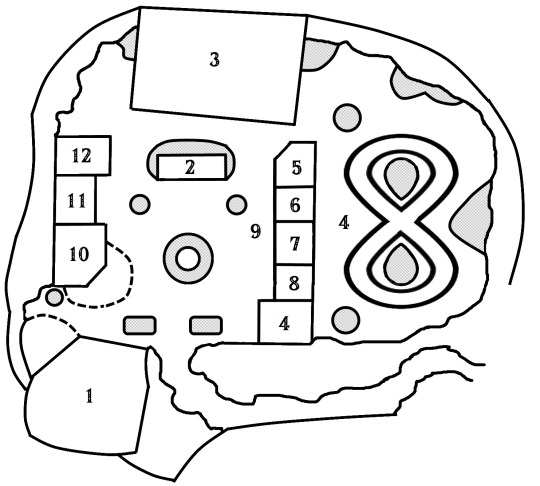
Attractions
Nabooru’s Training Course: A combination maze and obstacle course—periodically, the winding corridors offer an opportunity to hone your skills as an elite bandit…but if you don’t feel up to tackling the balance beam, overhead bars, crawl net, or other physical challenge, a normal path continues alongside the obstacle. This is just the beginners’ course—from time to time, you can peek through to a more advanced course where Gerudo make trapeze-caliber leaps over jets of fire, dodge flying darts, and disable booby traps (or fail to do so!). At the end of the maze is a playground featuring more things to climb and jump in, just in case you had any excess energy left.
Gerudo Warriors’ Procession: Taking place at scheduled intervals in the bazaar, a squad of the Gerudo tribe’s most impressive warriors parade through the street to a stage where they demonstrate some of their combat skills.
Skipper’s Time-Shifted Boat Tour: Inspired by the Lanayru Sand Sea from Skyward Sword, this dark ride uses projection mapping, augmented reality goggles, and a bit of motion simulation to create the illusion of riding in a boat through a desert that has been transformed into an ancient ocean, but only in a set radius around the craft thanks to the aura of the Timeshift Stone. Fantastic corals appear and disappear, long-decayed ships spring back into operation only to wither again as the boat leaves them behind, the bleached bones of sea monsters turn into living threats until the robot guide manages to outrun them. The queue includes a few interactive “windows” where the push of a button activates a Timeshift Stone to alter a scene—a massive tree reverts to a tiny sapling in a meadow, a crumbled ruin becomes a bustling fortress in its heyday, etc.
Sand-Seal Rally Race: A high-speed ride along a figure-eight racing track, in a seal-drawn “sand sled.” Watch out when you get to the crossing point—don’t crash with another sled!
Shops
5. Silken Palace: Scarves, shawls, capelets, veils, and other free-flowing clothing and accessories made from scrumptiously colored and patterned fabrics…even sarees! Knowledgeable staff can show how to properly put on your purchases if you need help.
6. Hotel Oasis Spa Shop: A health and beauty shop featuring LoZ-inspired makeup palettes, custom-blended perfumes and colognes, bath salts, soaps, scrubs, massage oils, and other products to pamper your skin after a long day in the desert.
7. Starlight Memories: A jewelry boutique specializing in big, showy styles of earrings, bracelets, necklaces, brooches, and even diadems. Many pieces are inspired by the traditional jewelry styles of the Middle East and South Asia.
8. Sand-Seal Adoption Center: The Sand-Seal Rally Race exits through this shop specializing in plush toys of sand seals and other desert creatures both real and fanciful, with an optional “adoption ceremony” for your special new friend.
9. Miscellaneous Merchandise Booths: Small spaces leased out to small business retailers whose wares are in line with the overall “vibe” of the Bazaar.
Eateries
10. Gerudo Bistro: A café with well-shaded patio seating, featuring a menu of Mediterranean and Middle Eastern entrees and appetizers.
11. Arbiter’s Grounds: An Arabian/Persian/Turkish style coffee and tea bar, harking back to the ancient relationship with coffee enjoyed by the cultures that inspired the Gerudo. Brews are available hot, iced, flavored, even blended with ice cream for a perky smoothie. Or head next door…
12. Kara Kara Creamery: Beat the heat with frozen treats! Ice cream, frozen yogurt, sherbet, milkshakes, and smoothies are all available here, made to order. If you’re with a group, try the Seven Heroines Sundae, with seven “orbs” of different flavors reflecting the virtues prized by the Gerudo: skill, spirit, endurance, knowledge, flight, motion, and gentleness.
12 notes
·
View notes
Text

Civil Rights Advocacy & Litigation
Since there is no Avengers Initiative working to physically fight our way to a more equitable world, we have to rely frequently on advocacy, public education, and litigation to bend the arc of the work more quickly towards justice. If this is your personal charitable focus, you have a lot of options to choose from, from organizations working on systemic change for marginalized populations to those focusing on freeing individuals from the prison industrial complex and defeating censorship.
For more information on donation methods and accepted currencies, please refer to our list of organizations page.
Autistic Self Advocacy Network
The Autistic Self Advocacy Network seeks to advance the principles of the disability rights movement with regard to autism. ASAN believes that the goal of autism advocacy should be a world in which autistic people enjoy equal access, rights, and opportunities and have their voices heard. For that reason, the organization is run by individuals on the autism spectrum. ASAN's primary focuses are advocating for policies that protect disability and civil rights, creating tools and leadership training for autistic self-advocates, and offering educational resources.
The Bail Project
In their own words, “The Bail Project, Inc. is an unprecedented effort to combat mass incarceration at the front end of the system. We pay bail for people in need, reuniting families and restoring the presumption of innocence. Because bail is returned at the end of a case, donations to The Bail Project™ National Revolving Bail Fund can be recycled and reused to pay bail two to three times per year, maximizing the impact of every dollar. 100% of online donations are used to bring people home.”
The financial burden that bail places upon many arrestees means that they stay in the system disproportionately longer than necessary, disrupting their economic options and personal stability. This is particularly true if they’re poor and/or people of color. To fight bail and provide pretrial support is to fight mass incarceration and the racial and economic disparities of the bail system in the United States.
Center for Reproductive Rights
The Center for Reproductive Rights is the only global legal advocacy organization dedicated to ensuring reproductive rights are protected in law as fundamental human rights for the dignity, equality, health, and well-being of every person. With local partners across five continents, they have secured legal victories before national courts, UN Committees, and regional human rights bodies on issues such as access to life-saving obstetrics care, contraception, maternal health, and safe abortion services and the prevention of forced sterilization and child marriage.
Disability Rights Education & Defense Fund
DREDF is the leading civil rights organization in the United States that fights for and is directed by people with disabilities and parents of children with disabilities. Not only does DREDF work directly with their clients to help them know their own rights, but they train and educate lawyers, lawmakers, and other societal gatekeepers to make sure they know those rights as well.
Electronic Freedom Foundation
The leading nonprofit defending civil liberties in digital spaces, EFF champions user privacy, free expression, and innovation through impact litigation, policy analysis, grassroots activism, and technology development. They fight against online censorship and illegal surveillance, advocate for net neutrality and data protection, and more so that technology supports freedom, justice, and innovation for everyone.
Innocence Project
The mission of the Innocence Project is deceptively simple: exonerate those who have been wrongly convicted through the use of DNA evidence. The reality of it involves much broader strokes covering support for exonerees rebuilding their lives post-release and criminal justice reform through targeted litigation and the implementation of laws to prevent wrongful conviction. They strive to restore freedom for the innocent, transform the systems responsible for unjust incarceration, and advance the freedom movement.
Native American Rights Fund
NARF is the oldest and largest nonprofit that defends Native American rights and provides legal assistance to Native American tribes, organizations, and individuals across the U.S. They concentrate on issues such as tribal sovereignty, land rights and treaty compliance, tribal natural resource protection, education on Native American human rights, and more.
Refugee and Immigrant Center for Education and Legal Services (RAICES)
Most known for their work on the Texas/Mexico border but operating on the national frontlines of the fight for immigration rights, RAICES provides free and low-cost legal services, bond assistance, and social programs to underserved immigrant children, families, and refugees. Among their many accomplishments, RAICES established the largest bond fund in the U.S., which they use to secure the release of individuals from ICE detention, and has more immigration lawyers than any other organization in Texas. These lawyers represent individuals, including children, in court, offer residency and citizenship services, assist asylum seekers, and deal with removal defense. RAICES also offers social services ranging from case management and resettlement assistance to a national hotline connecting migrants with local community resources and transit support for recently released migrants.
Southern Poverty Law Center
They’re mostly known in the U.S. as a hate group watchdog of sorts, but their work goes beyond tracking and exposing hate groups and promoting tolerance education programs. SPLC fights for voting rights advocacy, children’s rights, immigration reform and family reunification, LGBTQ+ rights, economic justice, and criminal justice reform. They work “with communities to dismantle white supremacy, strengthen intersectional movements, and advance the human rights of all people.” Essentially, if there is injustice against a vulnerable and/or marginalized group in the U.S., SPLC aims to address and fix it.
Transgender Law Center
Transgender Law Center, the largest trans-specific and trans-led organization in the U.S., changes law, policy, and attitudes so that all people can live safely and authentically and free from discrimination regardless of their gender identity or expression. Through its precedent-setting litigation victories and community-driven programs, TLC protects the rights of transgender and gender nonconforming people in areas spanning employment, prison conditions, education, immigration, healthcare, and more.
16 notes
·
View notes